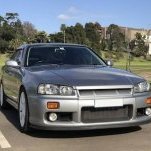Tyre Crack/cuts On Inner Sidewall - What Could Be The Cause?
Announcements
-
Similar Content
-
Latest Posts
-
By Dose Pipe Sutututu · Posted
I do like the look of these things (minus the ugly flat top surface with the text) https://rajabracing.com.au/product/nissan-rb25det-neo-intake/ Retains the OEM bottom runners, for that phat low range. If you want response king, maybe go with the Plazmaman pipe work, here's my old setup from a decade ago -
By robbo_rb180 · Posted
Torque will suffer greatly, will try and find dyno difference on r34 with gt30 between stock and plazmaman short runner. like 2000-3000rpm power rdip at least. EDIT Green line is stock manifold, others is plazmaman short runner I also had a rb25 with greddy and q45 TB back in the day and was shit daily driving. Plazmaman top plenum with stock runner and DBW made it so much nicer. -
As I've said elsewhere, I am using the stock intercooler piping path in the engine bay, and a return flow cooler, and making ~250 rwkW (without any effort put into trying to turn it up past there just yet) and expect to be able to make some more, and frankly, I would be perfectly happy with 260-270rwKW. This is peak road Skyline usability territory. You go past there and, sure, the car will snap necks more when it's on boost, but it will also break shit all the time, cost a (even larger) fortune in tyres, etc etc. Anyway, I also do not like the over-the-fan pipe path, and you don't have to do it.
-
By BuiltNotBought · Posted
I see, honestly I’m not too fussed about the looks. The only reason to go plenum is to make the piping easier instead of the classic over the rad etc.
-







Recommended Posts
Create an account or sign in to comment
You need to be a member in order to leave a comment
Create an account
Sign up for a new account in our community. It's easy!
Register a new accountSign in
Already have an account? Sign in here.
Sign In Now